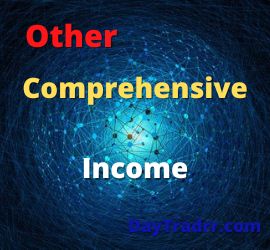What Is Return on Sales (ROS)?
 Return on sales is a financial analysis ratio that calculates how efficiently a company is generating profits from its top-line sales revenue. It provides insight into a company’s performance by analyzing the percentage of total revenue that is converted into operating profits. As a result, ROS is used as an indicator of both efficiency and profitability. It sheds light on how effectively a company is producing its core products and services. In turn, this reflects how well its management runs the business.
Return on sales is a financial analysis ratio that calculates how efficiently a company is generating profits from its top-line sales revenue. It provides insight into a company’s performance by analyzing the percentage of total revenue that is converted into operating profits. As a result, ROS is used as an indicator of both efficiency and profitability. It sheds light on how effectively a company is producing its core products and services. In turn, this reflects how well its management runs the business.
Return on sales (ROS) is useful when evaluating a company’s operational efficiency. The metric provides insight into how much profit is being produced per dollar of sales. For example, an increasing ROS indicates that a company is improving efficiency. Conversely, a decreasing ROS could signal impending financial troubles. ROS is closely related to a firm’s operating profit margin.
Formula and Calculation of Return on Sales (ROS)
Net sales and operating profit are readily available from a company’s income statement.
Return on Sales = Operating Profit / Net Sales
Steps to calculate return on sales:
- Find the net sales figure on the income statement. Some statements list this figure as revenue.
- Find operating profit on the income statement. This figure should not include non-operating activities and expenses. For example, taxes and interest expenses.
- Divide operating profit by net sales.
The equation excludes non-operating expenses such as taxes and financing structure. Income tax and interest expenditures, for example, are excluded from the calculation. This is because they are not considered operational expenses. Simplicity allows creditors and investors to understand the business’s key activities and focus on whether they are profitable or not.
What Return on Sales (ROS) Can Tell You
Investors may observe that certain firms report net sales while others report revenue when calculating return on sales. Total income minus credits or reimbursements given to consumers for goods returns equals net sales. Companies in the retail business will most likely report net sales, while others will report revenue.
The calculation demonstrates how well a firm produces its main products and services. Also, how well its management manages the organization. As a result, ROS is used to measure both efficiency and profitability. This efficiency ratio is trusted by investors, creditors, and other debt holders. This is because it properly represents the proportion of operational cash a firm earns on its sales. It also gives insight into possible dividends, reinvestment opportunities, and the company’s capacity to repay debt.
ROS is useful when comparing current periods to past period calculations. This enables a business to run trend studies and evaluate internal efficiency performance over time. It’s also a good idea to compare a company’s ROS % to that of its competitors. The contrast makes evaluating the success of a small business easier. However, the metric can vary considerably between sectors. Therefore, it should only be used to compare organizations within the same industry. For example, compared to a technological firm, a grocery store has smaller margins and hence a lower ROS.
Return on Sales – Why It Matters
Return on sales is one of the most straightforward figures for determining a company’s overall performance. As a result, the metric is popular among shareholders and creditors. It offers a clear picture of a company’s reinvestment potential, capacity to repay debts, and dividend prospects. ROS is also one of the most dependable indicators of year-over-year improvement. Higher revenue may not be the most accurate gauge of a company’s profitability. This is because sales and costs might fluctuate over time. Return on sales, on the other hand, is a metric that takes into account both revenue and costs. It enables firms to see how the two statistics interact. Therefore, it provides a far more accurate picture of how well the company is operating.
The return on sales metric demonstrates how successfully the firm produces its core products or services. Also, how well the management team runs it since it evaluates the proportion of sales that are converted to income.
Example
Consider a company that generates $200,000 in sales and requires $150,000 in total costs to generate the revenue ($150,000/$200,000 = .75 or 75%). This is less efficient than a smaller company that generates $180,000 in sales but also requires $150,000 to do so ($150,000/$180,000 = .83 or 83%).
ROS can grow if a company’s management successfully cuts costs while increasing revenue. Using the same example, the company with $200,000 in sales and $150,000 in costs has an operating profit of $50,000 and a ROS of 75% ($150,000 / $2000,000). Say the General Manager directs the company to boost efficiency. Management can focus on raising revenues while gradually rising expenditures. Or, they can focus on lowering expenses while maintaining or gradually increasing income – or both.
Limitations of Using Return on Sales
Return on sales should only be used to compare firms in the same industry. Ideally, with similar business structures and yearly sales data. Companies in diverse industries with vastly different business structures have vastly varying operating margins. This makes comparisons with EBIT in the numerator misleading. Many analysts utilize a profitability measure that excludes the impacts of financing, accounting, and tax rules. This is to make it simpler to evaluate sales efficiency between various firms and industries. Often, they use profits before interest, taxes, depreciation, and amortization (EBITDA).
The operating margins of large manufacturing enterprises and heavy industrial firms, for example, are more comparable when depreciation is included in. EBITDA is sometimes used as a substitute for operating cash flow. This is because it excludes non-cash expenses, such as depreciation. However, EBITDA is not the same as cash flow. This is because, unlike operational cash flow, it does not account for any rise in working capital or capital expenditures required to sustain production and maintain a company’s asset base.
Frequently Asked Questions
What Is the Difference Between ROS and Operating Margin?
Return on sales and operating profit margin are two financial ratios that are commonly used interchangeably. The difference is the way each is derived. Operating income divided by net sales is the basic formula for calculating operating margin. The numerator of a return on sales calculation is normally profits before interest and taxes (EBIT), while the denominator is still net sales.
Can Return on Sales be used to compare companies?
Return on sales should only be used to compare firms in the same industry. Ideally, those with similar business structures and yearly sales data. For example, when compared to a technological firm, a food store has smaller margins and hence a lower ROS. Companies in diverse industries with vastly different business structures have vastly varying operating margins. This makes comparisons with EBIT in the numerator misleading.
How do you increase your return on sales?
Businesses have a variety of methods for increasing their Return on Sales. One way is to raise the product price whenever possible. However, you do not want your rates to be significantly higher than those of your rivals. This could price you out of the market!. Only if your brand provides a better customer experience or a longer guarantee on items than competitors. Another approach is to reduce the cost of materials. You can do this by negotiating with present suppliers or finding a less expensive alternative. If you start buying supplies in larger numbers, you might be able to receive a discount. Finally, businesses may enhance their Return on Sales by examining how they make and distribute their goods. Moving production overseas, for example, may result in long-term savings and a higher return.
Up Next: What Is a Liquidator?
 A liquidator is a specialist who administers the winding up of a company, paying off creditors and distributing the remainder to shareholders. In general terms, it refers to a person or entity that liquidates something—usually assets. Assets are liquidated by selling them on the open market for cash or other substitutes of value. The liquidator has the legal authority to act on behalf of the firm in a variety of roles.
A liquidator is a specialist who administers the winding up of a company, paying off creditors and distributing the remainder to shareholders. In general terms, it refers to a person or entity that liquidates something—usually assets. Assets are liquidated by selling them on the open market for cash or other substitutes of value. The liquidator has the legal authority to act on behalf of the firm in a variety of roles.
A court-appointed liquidator is an officer who is particularly commissioned to wind up the affairs of a corporation. This usually occurs when the firm goes bankrupt or is financially insolvent. Under these circumstances, a company is forced to stop operating because it cannot pay its debts. The liquidator sells a company’s assets, and the proceeds are used to pay off the company’s obligations. A liquidator may also be named as a bankruptcy trustee in various jurisdictions. A liquidator has the legal ability to liquidate a company’s assets as well as file and defend litigation on its behalf.




